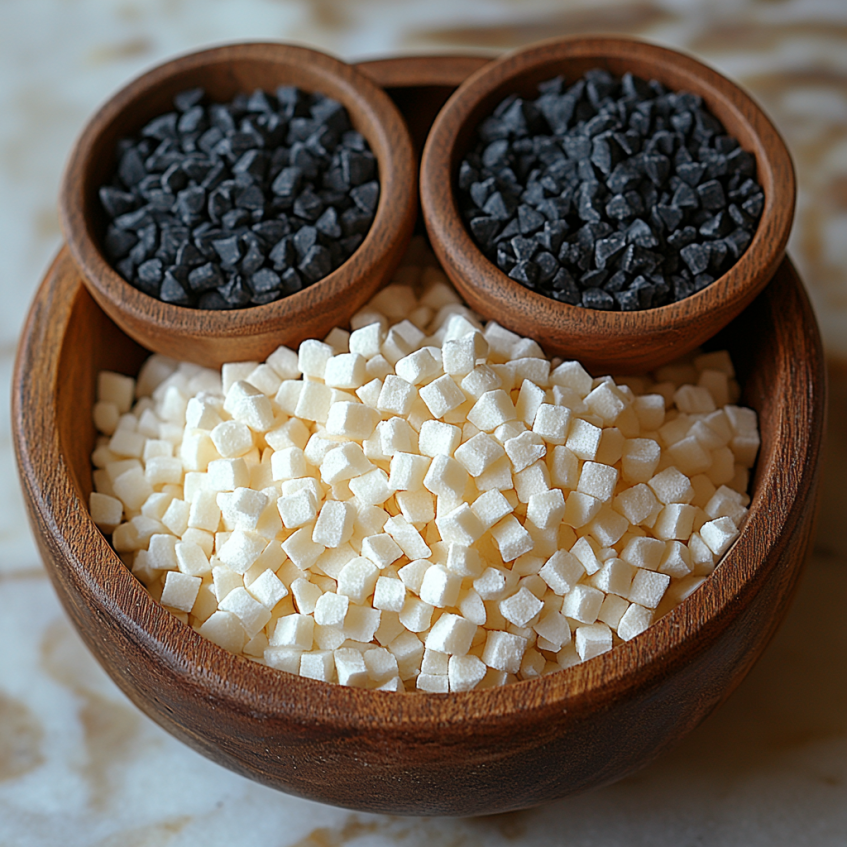Polyethylene Terephthalate (PET) is a versatile polymer widely used in various industries, from packaging to textiles. Two common forms of this material are PET resin and polyester chips, which are often confused due to their similar chemical composition. However, they differ in production, properties, and applications. This article explores the distinctions between PET resin and polyester chips, their characteristics, and their uses.
PET resin, or Polyethylene Terephthalate resin, is a thermoplastic polymer produced through the polymerization of ethylene glycol and terephthalic acid. It is typically available in the form of pellets or granules, which serve as the raw material for manufacturing various PET-based products. PET resin is known for its clarity, strength, and recyclability, making it a popular choice in the packaging industry.
The production of PET resin involves a two-step process: esterification and polycondensation. During esterification, ethylene glycol reacts with terephthalic acid to form a monomer. This monomer then undergoes polycondensation to create long polymer chains, resulting in PET resin. The resin is characterized by its high molecular weight and viscosity, which can be tailored for specific applications through additives or processing conditions.
PET resin is valued for its excellent barrier properties against moisture and gases, as well as its chemical resistance. These qualities make it ideal for producing bottles, containers, and films. Additionally, PET resin is recyclable, contributing to its widespread use in sustainable packaging solutions.
Polyester chips, sometimes referred to as PET chips, are small, solid granules of PET polymer produced during the initial stages of PET manufacturing. These chips are essentially the intermediate product of PET resin production, created after the polymerization process but before further processing into final products. Polyester chips are typically uniform in size and shape, designed for easy handling and melting during downstream manufacturing.
The production of polyester chips involves the same chemical processes as PET resin—esterification and polycondensation. However, the chips are cut into small, standardized sizes immediately after polymerization, making them suitable for applications like fiber spinning or film extrusion. Polyester chips come in various grades, such as textile-grade, bottle-grade, and film-grade, each tailored to specific end uses based on viscosity and additives.
Polyester chips are widely used in the textile industry to produce polyester fibers for clothing, upholstery, and industrial fabrics. They are also used in the production of PET films and other molded products. Their versatility stems from their ability to be melted and reshaped into various forms.

While PET resin and polyester chips share the same chemical foundation, their differences lie in their form, processing, and intended applications. Below are the key distinctions:
Form and Processing: PET resin is the raw, unprocessed form of the polymer, available as pellets or granules. Polyester chips are a processed form of PET resin, cut into uniform sizes for specific manufacturing processes like fiber spinning or film production.
Viscosity and Grades: PET resin can have a wide range of intrinsic viscosities, depending on its intended use. Polyester chips are categorized into specific grades (e.g., textile-grade or bottle-grade) with controlled viscosity to suit particular applications.
Applications: PET resin is primarily used for injection molding and blow molding to create bottles, containers, and films. Polyester chips are more commonly used in textile manufacturing and film extrusion due to their uniform size and ease of melting.
Production Stage: PET resin is the direct output of the polymerization process, while polyester chips are a further processed form of the resin, designed for specific downstream applications.
These differences highlight that while both materials are PET-based, their roles in the production chain and their physical forms set them apart.
PET resin is a cornerstone of the packaging industry due to its strength, clarity, and recyclability. Common applications include:
Beverage Bottles: PET resin is widely used to produce bottles for water, soft drinks, and juices. Its gas barrier properties ensure product freshness.
Food Containers: Trays and containers for food packaging benefit from PET resin’s chemical resistance and durability.
Films and Sheets: PET resin is used to create films for packaging, labels, and industrial applications due to its clarity and flexibility.
Medical Packaging: Sterile packaging for medical devices and pharmaceuticals often uses PET resin for its hygiene and barrier properties.
The recyclability of PET resin also supports its use in sustainable products, such as recycled PET (rPET) for eco-friendly packaging.
Polyester chips are predominantly used in the textile and film industries. Their key applications include:
Textile Fibers: Polyester chips are melted and spun into fibers for clothing, carpets, and industrial textiles. These fibers are known for their strength and wrinkle resistance.
PET Films: Chips are used to produce films for packaging, electrical insulation, and graphic arts due to their uniform melting properties.
Industrial Applications: Polyester chips are used in the production of ropes, tire cords, and other high-strength materials.
Specialty Products: Certain grades of polyester chips are used in engineering plastics and high-performance films.
The uniform size and tailored viscosity of polyester chips make them ideal for precise manufacturing processes in these industries.
In summary, PET resin and polyester chips are two forms of the same polymer, Polyethylene Terephthalate, but they serve distinct purposes in manufacturing. PET resin is the raw material, versatile for a range of molding and packaging applications, while polyester chips are a processed form, optimized for textile and film production. Understanding their differences—form, viscosity, and applications—helps manufacturers choose the right material for their needs. Both materials play critical roles in industries ranging from packaging to textiles, driven by PET’s strength, clarity, and recyclability.